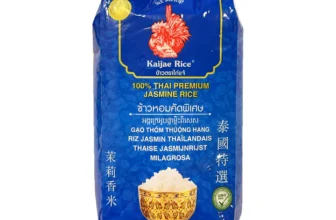
Selecting the right printing rubber roller is crucial for the efficiency and quality of your printing processes. A high-quality rubber roller ensures precision, durability, and consistency in printing, which directly impacts the final product’s quality. Whether you are in the packaging, textile, or any other printing industry, understanding how to choose the best rubber roller for your needs can make a significant difference in your operations. This guide will walk you through the essential factors to consider when selecting a high-quality printing rubber roller.
Understanding the Role of Printing Rubber Rollers
Before diving into the selection process, it’s important to understand the role of printing rubber rollers in the printing industry. These rollers are integral to various printing machines and processes, including offset printing, flexographic printing, and gravure printing. Their primary function is to transfer ink or coating to the substrate, ensuring an even and consistent application. The performance of these rollers directly influences print quality, making their selection a critical decision.
Key Factors to Consider When Choosing a High-Quality Printing Rubber Roller
1. Material Composition
The material of the rubber roller plays a pivotal role in its performance. High-quality printing rubber rollers are typically made from materials like EPDM (Ethylene Propylene Diene Monomer), NBR (Nitrile Butadiene Rubber), or natural rubber. Each material has its unique properties that make it suitable for specific printing applications:
EPDM: Known for its excellent resistance to heat, UV rays, and chemicals, EPDM is ideal for applications where the roller is exposed to harsh environmental conditions.
NBR: Nitrile Butadiene Rubber offers superior resistance to oils and solvents, making it a preferred choice for printing processes involving oily or greasy substances.
Natural Rubber: While less resistant to chemicals, natural rubber provides excellent elasticity and resilience, making it suitable for general-purpose printing.
Choosing the right material ensures that the roller can withstand the demands of your specific printing process, leading to longer service life and consistent performance.
2. Hardness (Durometer)
The hardness of the rubber roller, measured in durometer, significantly impacts its performance. The durometer scale ranges from soft to hard, typically from 20A to 80A for rubber rollers:
Soft Rollers (20A-40A): These are more elastic and provide better ink transfer, making them suitable for fine printing work where detail is critical.
Medium Rollers (40A-60A): These offer a balance between flexibility and durability, making them ideal for general-purpose printing tasks.
Hard Rollers (60A-80A): Hard rollers are more resistant to wear and tear, making them suitable for heavy-duty printing applications where pressure and durability are more important than fine detail.
Selecting the appropriate durometer depends on the nature of your printing process. For example, high-quality printing rubber rollers with a medium durometer are typically preferred in the packaging industry for their balance of durability and print quality.
3. Surface Finish
The surface finish of a printing rubber roller affects ink transfer and print quality. A smooth surface is ideal for processes that require precise and consistent ink application, such as in the printing of fine graphics or text. However, a slightly textured surface might be beneficial in applications where a bit more ink holdout is needed, such as in certain types of flexographic printing.
When selecting a high-quality printing rubber roller, consider the following surface finish options:
Smooth Finish: Provides consistent ink transfer and is ideal for detailed work.
Textured Finish: Offers better ink holdout and is useful for applications requiring a thicker ink layer.
Ensuring that the surface finish matches your printing requirements will result in better print quality and efficiency.
4. Chemical Resistance
In printing processes, rollers are often exposed to various chemicals, including inks, solvents, and cleaning agents. Choosing a rubber roller with high chemical resistance ensures that the roller does not degrade prematurely, which can lead to inconsistent print quality and increased downtime.
For example, in flexographic printing, where water-based and UV inks are common, selecting a rubber roller with excellent resistance to these substances is crucial. EPDM rubber is often preferred in such cases due to its outstanding chemical resistance.
5. Temperature Resistance
Printing processes often involve exposure to varying temperatures. A high-quality printing rubber roller should be able to maintain its integrity and performance under these conditions. For instance, in heat-set printing processes, rollers may be exposed to elevated temperatures. Choosing a roller made from materials like EPDM, which can withstand higher temperatures, ensures that the roller performs consistently without warping or degrading.

6. Load-Bearing Capacity
The load-bearing capacity of a rubber roller refers to its ability to withstand the pressure applied during the printing process. Rollers with higher load-bearing capacity are essential for heavy-duty printing tasks where significant pressure is applied to transfer ink onto the substrate. A high-quality printing rubber roller should maintain its shape and performance under these pressures to ensure consistent print quality.
7. Precision Manufacturing
The precision with which a rubber roller is manufactured directly impacts its performance. High-quality rollers are manufactured with tight tolerances to ensure uniformity in size, shape, and surface finish. This precision is crucial for maintaining consistent ink transfer and avoiding issues such as streaking or uneven printing.
When selecting a rubber roller, consider manufacturers that adhere to strict quality control standards and use advanced manufacturing techniques to produce precision rollers. This ensures that the rollers will perform reliably in your printing process.
8. Customization Options
Every printing process is unique, and sometimes standard rollers may not meet your specific requirements. High-quality rubber roller manufacturers offer customization options, allowing you to specify the material, hardness, surface finish, and dimensions of the roller to suit your particular needs.
Customization ensures that the roller is perfectly suited to your printing process, leading to improved performance and efficiency. Whether you need a roller for a specialized printing application or require specific dimensions, opting for a custom solution can provide the best results.
9. Durability and Longevity
Investing in a high-quality printing rubber roller that offers durability and longevity can save you money and reduce downtime in the long run. Durable rollers are less likely to wear out quickly, which means fewer replacements and less maintenance. Look for rollers that are designed to withstand the rigors of your specific printing process, whether that involves high temperatures, abrasive inks, or heavy usage.
10. Supplier Reputation
The reputation of the supplier or manufacturer is another critical factor to consider when choosing a high-quality printing rubber roller. Established suppliers with a history of producing reliable and durable rollers are more likely to provide products that meet your expectations. Consider the following when evaluating a supplier:
Customer Reviews: Look for feedback from other customers to gauge the quality and reliability of the supplier’s products.
Industry Experience: Suppliers with extensive experience in the printing industry are more likely to understand the specific needs and challenges of your business.
Technical Support: A reputable supplier will offer technical support and assistance in selecting the right roller for your application.
Partnering with a trusted supplier ensures that you receive a high-quality product and the support needed to optimize your printing processes.
Conclusion: Making the Right Choice
Selecting the right printing rubber roller is a critical decision that impacts the quality and efficiency of your printing operations. By considering factors such as material composition, hardness, surface finish, chemical resistance, temperature resistance, load-bearing capacity, precision manufacturing, customization options, durability, and supplier reputation, you can choose a high-quality rubber roller that meets your specific needs.
Investing in a high-quality printing rubber roller not only enhances print quality but also reduces maintenance costs and downtime, leading to more efficient and profitable operations. Whether you’re in the packaging, textile, or any other printing industry, making the right choice in rubber rollers is essential for achieving the best results.
Ensure that your printing processes are equipped with the best tools by selecting a high-quality printing rubber roller tailored to your needs.







